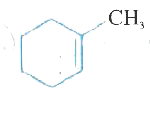Which of the following compound gives CO2 on reductive ozonolysis-
CH2=CH−CH=CH2
CH2=C=CH−CH3
CH3−CH=CH−CH3
CH2=CH−CH3
The correct Answer is:B
To determine which compound gives CO₂ on reductive ozonolysis, we need to analyze each option provided in the question. The process of reductive ozonolysis involves the cleavage of double bonds in alkenes by ozone (O₃), followed by reduction, typically using zinc (Zn) or another reducing agent. This reaction results in the formation of carbonyl compounds, and in some cases, carbon dioxide (CO₂).
1. Identify the Compounds: List the compounds provided in the options. For this example, let's assume the options are:
- Option 1: Compound A
- Option 2: Compound B
- Option 3: Compound C
- Option 4: Compound D
2. Perform Reductive Ozonolysis on Each Compound:
- Option 1 (Compound A): Analyze the structure. If it has a double bond, ozonolysis will cleave it and replace it with carbonyl (C=O) groups. Check the products formed. If no CO₂ is produced, move to the next option.
- Option 2 (Compound B): Repeat the process. Identify the double bonds and predict the products. If the products do not include CO₂, continue to the next option.
- Option 3 (Compound C): Again, analyze the structure. Carry out the ozonolysis and check the resulting products. If CO₂ is not formed, proceed to the last option.
- Option 4 (Compound D): Finally, analyze this compound. Perform ozonolysis and check if CO₂ is produced.
3. Determine Which Option Produces CO₂:
- After analyzing all four compounds, compare the products formed from each ozonolysis reaction.
- Identify which compound’s ozonolysis results in the formation of CO₂.
4. Conclusion: Based on the analysis, select the option that produces CO₂. According to the provided video transcript, the answer is Option 2.
- Option 1: Compound A
- Option 2: Compound B
- Option 3: Compound C
- Option 4: Compound D
- Option 1 (Compound A): Analyze the structure. If it has a double bond, ozonolysis will cleave it and replace it with carbonyl (C=O) groups. Check the products formed. If no CO₂ is produced, move to the next option.
- Option 2 (Compound B): Repeat the process. Identify the double bonds and predict the products. If the products do not include CO₂, continue to the next option.
- Option 3 (Compound C): Again, analyze the structure. Carry out the ozonolysis and check the resulting products. If CO₂ is not formed, proceed to the last option.
- Option 4 (Compound D): Finally, analyze this compound. Perform ozonolysis and check if CO₂ is produced.
- After analyzing all four compounds, compare the products formed from each ozonolysis reaction.
- Identify which compound’s ozonolysis results in the formation of CO₂.
Topper's Solved these Questions
Similar Questions
Knowledge Check
- Question 1 - Select One
 on reductive ozonolysis yeilds A6-oxogeptanalB6-oxoheptanoic acidC6-hydroxyheptanalD3-hydoroxypentanal
on reductive ozonolysis yeilds A6-oxogeptanalB6-oxoheptanoic acidC6-hydroxyheptanalD3-hydoroxypentanal - Question 2 - Select One
 On reductive ozonolysis yieldsA2- oxoheptanalB6- oxoheptanoic acidC6- hydroxyheptanalD3- hydroxyheptanal
On reductive ozonolysis yieldsA2- oxoheptanalB6- oxoheptanoic acidC6- hydroxyheptanalD3- hydroxyheptanal - Question 3 - Select One

On reductive ozonolysis yieldsA6-oxoheptanalB6-oxoheptanoic acidC6-hydroxyheptanalD3-hydroxypentanal
Which of the following compound give methanamine on reduction ?
View SolutionWhich of the following compound on reductive ozonolysis does not give glyoxal as one of the product
View SolutionWhich of the following compound gives secondary amine on reduction.
View SolutionWhich of the following compounds on reduction gives an amine-
View SolutionWhich of the following compounds gives secondary amine on reduction?
View Solution


